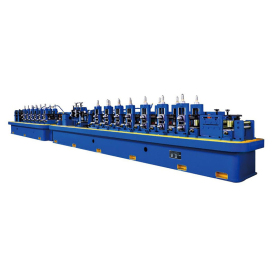[Complete Pipe mill production line solution]Comprehensive Overview of a Complete Pipe Mill Production Line Solution: Key Components, Benefits, and Implementation Strategies
News 2024-8-5
****In the modern industrial landscape, efficiency and quality are paramount, particularly in the production of pipes for various applications. A Complete Pipe Mill Production Line Solution encompasses the entire manufacturing workflow, from raw material handling to the finished product. This article aims to provide a detailed overview of such a solution, focusing on key components, benefits, and strategies for successful implementation in the manufacturing environment.
Key Components of a Complete Pipe Mill Production Line Solution
The Complete Pipe Mill Production Line Solution is essentially a series of interconnected machines and processes designed to produce pipes from various materials, including steel, PVC, and more. Each component plays a crucial role in ensuring that the production line operates smoothly and efficiently.
1. **Raw Material Preparation**: The production process begins with the selection and preparation of raw materials, which could be in the form of coils or pellets. Adequate handling and storage systems are essential to ensure minimal waste and contamination.
2. **Forming Process**: This stage is critical as it involves shaping the raw materials into the desired pipe form. Techniques such as hot rolling, cold rolling, or extrusion are employed depending on the material type and the pipe specifications.
3. **Welding and Joining**: For certain types of pipes, especially those made from sheet metal, welding processes such as submerged arc welding, high-frequency induction welding, or laser welding are utilized. A complete solution ensures that these welding operations are precisely controlled to maintain the structural integrity of the pipes.
4. **Heat Treatment**: After welding, pipes may undergo heat treatment processes to enhance properties such as tensile strength and ductility. This component of the production line plays an essential role in improving the performance of the final product.

Comprehensive Overview of a Complete Pipe Mill Production Line Solution: Key Components, Benefits, and Implementation Strategies
6. **Quality Control**: Integral to any Complete Pipe Mill Production Line Solution is a robust quality control system. Rigorous testing and inspection techniques, including ultrasonic testing, hydrostatic testing, and visual inspections, ensure that each pipe meets industry standards and specifications.
7. **Packaging and Storage**: Once produced, pipes need to be properly packaged to prevent damage during transit and storage. This component also includes warehousing capabilities to manage inventory efficiently.
Benefits of a Complete Pipe Mill Production Line Solution
Investing in a complete pipe mill production line can yield numerous benefits for manufacturers and consumers alike:
1. **Increased Efficiency**: Automation of processes reduces manual labor and accelerates production rates, leading to faster turnaround times and reduced operational costs.
2. **Enhanced Product Quality**: With integrated quality control measures, manufacturers can ensure consistent quality across their product range, resulting in fewer defects and customer complaints.
3. **Flexibility**: A complete solution allows manufacturers to adapt to changing market demands quickly. Whether it’s producing different types of pipes or switching between materials, flexibility remains a key advantage.
4. **Cost-Effectiveness**: By streamlining production processes and minimizing waste, a complete pipe mill production line can significantly lower production costs, improving profitability.
5. **Data Management and Optimization**: Advanced production lines often include software solutions that monitor performance metrics, enabling manufacturers to optimize their operations continuously.
Implementation Strategies
Successfully implementing a complete pipe mill production line solution requires meticulous planning and execution:
1. **Assessment of Needs**: Companies must perform a thorough analysis of their production requirements, including product specifications, material types, and expected output.

Comprehensive Overview of a Complete Pipe Mill Production Line Solution: Key Components, Benefits, and Implementation Strategies

Comprehensive Overview of a Complete Pipe Mill Production Line Solution: Key Components, Benefits, and Implementation Strategies
4. **Ongoing Maintenance and Support**: Regular maintenance of machinery and equipment is essential to prevent downtime. Additionally, having access to technical support can help resolve issues efficiently.
5. **Continuous Improvement**: Manufacturers should adopt a culture of continuous improvement, regularly reviewing performance metrics and seeking ways to enhance processes and products.
In conclusion, a Complete Pipe Mill Production Line Solution is integral for modern manufacturers aiming to boost productivity while maintaining high-quality standards. By understanding the key components, benefits, and implementation strategies, companies can invest wisely in these production lines and position themselves competitively in the market.
